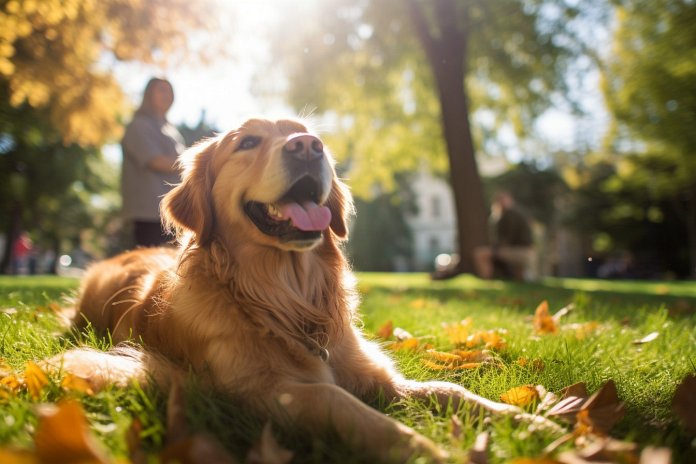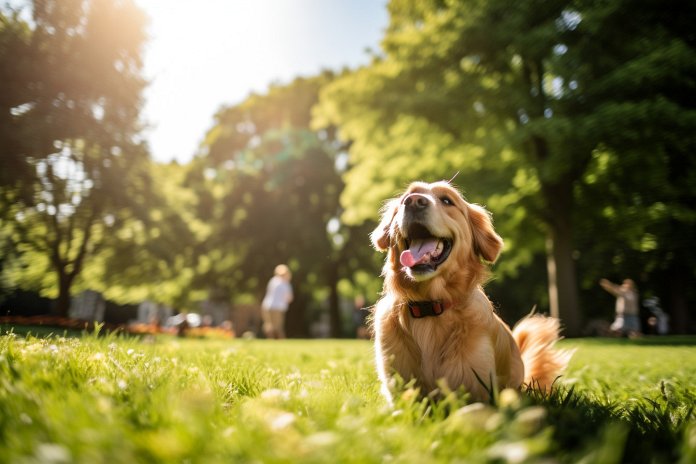
Dogs have incredible senses, including a strong sense of smell, which allows them to remember people they have met. They also have a sixth sense, or intuition, that helps them determine if someone is a friend or a stranger. Dogs are very perceptive of body language and pheromones, allowing them to sense when a stranger is present.
Signs Your Dog has Sensed a Stranger
Dogs can determine if someone is a stranger to your household. They use their social intelligence and senses to pick up on body odors, fear or anxiety, and someone coming from a different neighborhood. Dogs also observe body language and tension, and will alert you through their own body language. This may include raised hackles, a straight or slowly wagging tail, or growling.
Body Language
Other signs that your dog recognizes someone as a stranger include a stiff body posture, flaring nostrils, and raised back hair and ears.
The History Behind Dogs Sensing Strangers
Dogs’ wolf ancestors were naturally fearful of strangers, and would drive them away from the pack. Dogs continue to sense danger from strangers due to negative body language and unfamiliar smells.
The Science Behind Dogs Sensing Strangers
Scientists and animal behaviorists recognize dogs’ ability to sense and remember different smells. Dogs can associate smells with objects and track them. They also have a strong sense of smell that affects their brain responses, as shown through MRI scans.
Training a Dog to Sense Strangers
Some breeds are more predisposed to guarding and protecting their home. While training for guarding is more intense and may not suit all families, it is possible to train a dog to be a good watchdog. However, it is important to distinguish between a protection dog and a family guard or watchdog. Protection dogs require specific qualities and training, while watchdogs naturally alert their owners to strangers. Professional help is recommended for training a dog as a guard dog.
“Trust your dog’s instincts, they can sense a stranger before you can.”

Tips & Things to Know
1️⃣ Dogs have a heightened sense of smell and intuition, allowing them to sense and remember strangers. They can pick up on strange body odors, fear or anxiety, and different neighborhood scents.
2️⃣ Signs that your dog has sensed a stranger include raised hackles, a straight or slowly wagging tail, growling, and tense body language. Dogs also practice “social referencing” by looking to their owners for clues and encouragement in response to a stranger.
3️⃣ Dogs have a natural instinct to protect their home and family. While some breeds are more predisposed to guarding, it is important to distinguish between a family guard or watchdog and a fully trained protection dog. Training a dog for guarding requires clear leadership skills and specific qualities such as stable temperament, confidence, assertiveness, and loyalty.
Frequently Asked Questions, Answered ✅
1. How do dogs sense if someone is a stranger?
– Dogs use their senses, particularly their sense of smell, to determine if someone is unknown to their household. They can pick up on strange body odors, the smell of fear or anxiety, and someone coming from a different neighborhood.
2. What are some signs that a dog has sensed a stranger?
– Signs that a dog has sensed a stranger include raised hackles, a straight or slowly wagging tail, and growling as a warning. They may also observe the stranger’s body language and notice tension or apprehension.
3. Why are dogs naturally wary of strangers?
– Dogs’ wolf ancestors were naturally fearful of strangers in the wild as they could mean danger to the pack. This instinct has been passed down to domesticated dogs, making them alert and cautious around strangers.
4. How do dogs sense danger from strangers?
– Dogs can pick up on negative body language displayed by intruders, as well as the smell of an unwanted visitor. They have a natural ability to sense danger and protect their owners.
5. Can dogs be trained to sense and guard against strangers?
– Some dogs are naturally predisposed to guarding and protecting their families, but training can enhance their abilities. However, it is important to distinguish between a family guard or watchdog and a fully trained protection dog. Training a dog to be a guard dog requires specific qualities, clear leadership skills, and professional help.